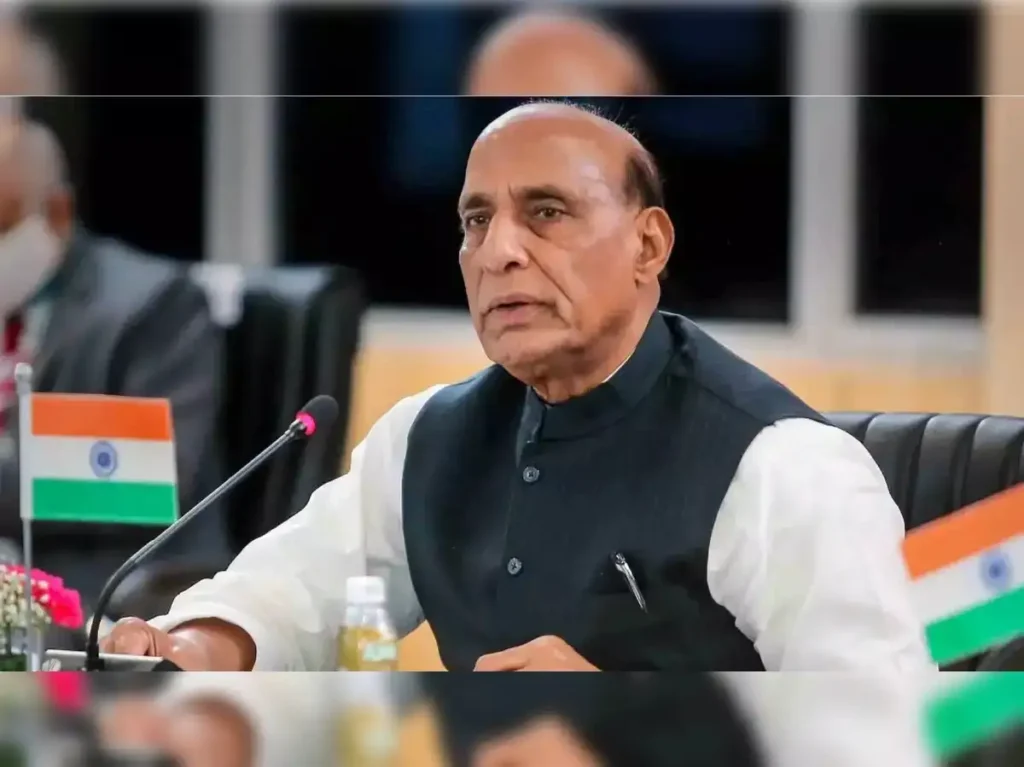Rajnath Singh to Visit Bhuj Airbase and India-Pakistan Border After Reports of Pakistani Air Intrusions
Defence Minister Rajnath Singh will soon visit the Bhuj airbase in Gujarat and nearby areas along the India-Pakistan border, sources revealed. His trip follows reports that Pakistani aircraft tried to enter Indian airspace at over 26 locations, including near the Bhuj air force station, during the night between May 9 and 10.

India Responds to Aerial Threats
According to defence sources, the Pakistan Air Force launched a series of attempted intrusions across the western border. The Indian military quickly picked up the unusual aerial movements on radar. In response, the Indian Air Force (IAF) scrambled fighter jets and activated surveillance systems. These actions prevented any potential breach of Indian airspace.
Among the attempted points of entry, Bhuj stood out due to its strategic location near the border. This airbase has always played a crucial role in monitoring western skies and responding to emerging threats.
Rajnath Singh’s Visit: A Clear Signal
Rajnath Singh plans to review India’s readiness along the western frontier during his visit. He will meet top officials from the IAF and the Border Security Force (BSF) to discuss the attempted intrusions and evaluate response measures. The Defence Minister will also inspect radar systems, operational preparedness, and the progress of infrastructure upgrades.
His visit sends a strong signal: India will not tolerate any violation of its airspace and will continue strengthening its defence capabilities.
Bhuj’s Strategic Role in National Security
The Bhuj airbase holds both historical and military importance. During the 1971 war, Pakistani bombers repeatedly targeted it. In an extraordinary show of courage, local villagers — many of them women — helped rebuild the airstrip within 72 hours. Their efforts allowed Indian fighter jets to resume operations quickly.
Today, Bhuj stands as a symbol of resilience. The base now hosts modern surveillance equipment, advanced aircraft, and drone units. It remains a vital hub for tracking cross-border activity and defending the western skies.
Understanding Pakistan’s Motive
Defence experts believe Pakistan’s actions may have aimed to test India’s radar sensitivity and response time. Some suggest that these flights were part of a broader strategy to trigger uncertainty or provoke a reaction. Regardless of intent, Indian forces remained calm, alert, and fully prepared to deal with the situation.
International Community Watches Closely
India’s responsible handling of the situation shows its commitment to regional stability. Given the nuclear capabilities of both nations, even a minor incident can draw international attention. Rajnath Singh’s visit highlights India’s defensive strength and its steady leadership under pressure.
Countries around the world have long urged India and Pakistan to avoid escalation. By focusing on readiness instead of retaliation, India presents itself as a mature and stable power.
Upgrades to Border Defences
In recent years, the Indian government has heavily invested in border security. The Bhuj sector, in particular, has seen the deployment of high-tech radar systems, all-weather roads, and advanced fighter aircraft. The Defence Minister will likely assess the performance of these systems during his tour.
The government has also increased the use of drones and satellite surveillance. These tools help identify unusual movements early, allowing forces to act before threats grow serious.
Civil-Military Cooperation on High Alert
Local authorities in Gujarat’s border districts, including Kutch, remain in close coordination with military units. This collaboration ensures quick information-sharing and rapid action if needed. In areas like Bhuj, civilians understand the stakes and often support defence efforts during emergencies.
Rajnath Singh’s visit will also boost morale among those living and working near the border, reassuring them that the government takes their safety seriously.
Readiness in a Changing Security Landscape
The nature of threats is evolving. Nations now face risks from drone strikes, cyber attacks, and hybrid warfare. In response, India continues to modernize its military and shift towards technology-driven defence strategies.
By visiting Bhuj and interacting with officers, Rajnath Singh will gain a clearer picture of the challenges on the ground. His presence underlines the government’s active involvement in safeguarding national security.
Final Thoughts: A Clear and Firm Response
The Defence Minister’s visit to Bhuj airbase and the India-Pakistan border serves multiple purposes. It offers support to the forces, reassures the public, and reminds adversaries that India stands strong and vigilant.
While Pakistan’s recent attempts to provoke or infiltrate may not have succeeded, they serve as a reminder that threats remain real. India’s leadership, by staying calm and focused, has shown the importance of preparedness over panic.






